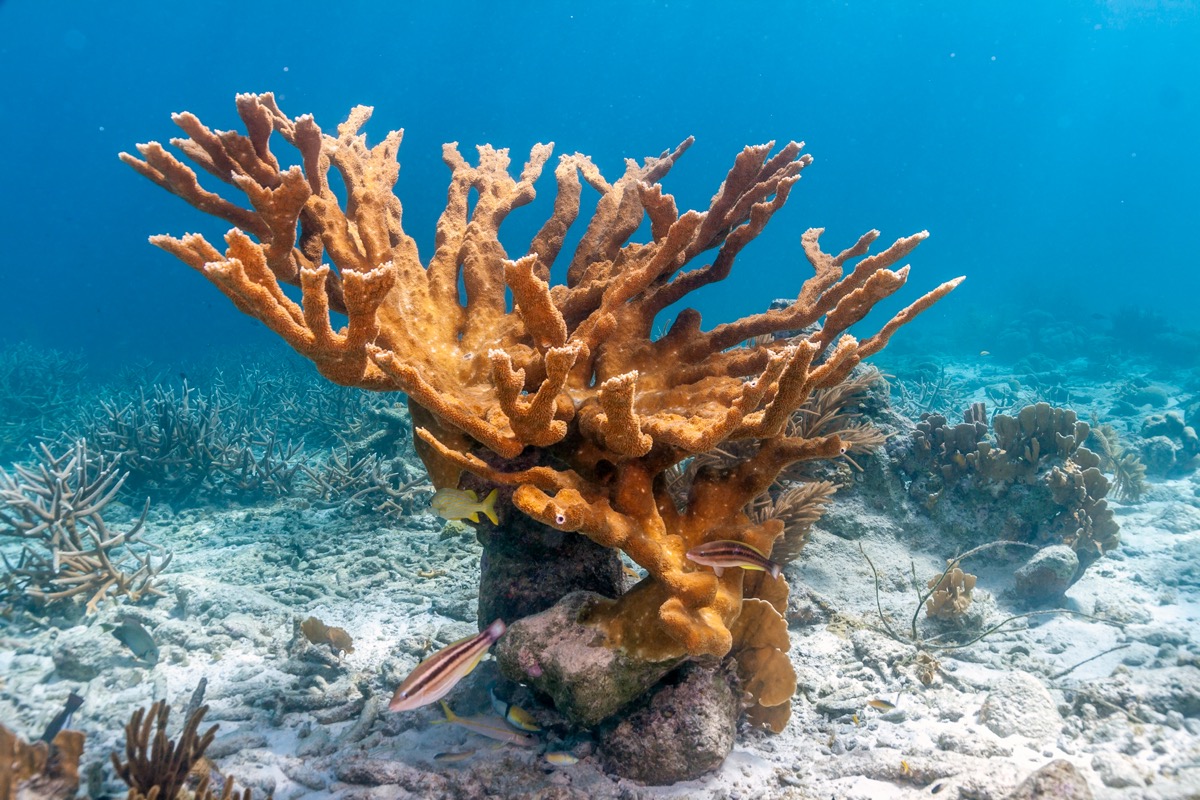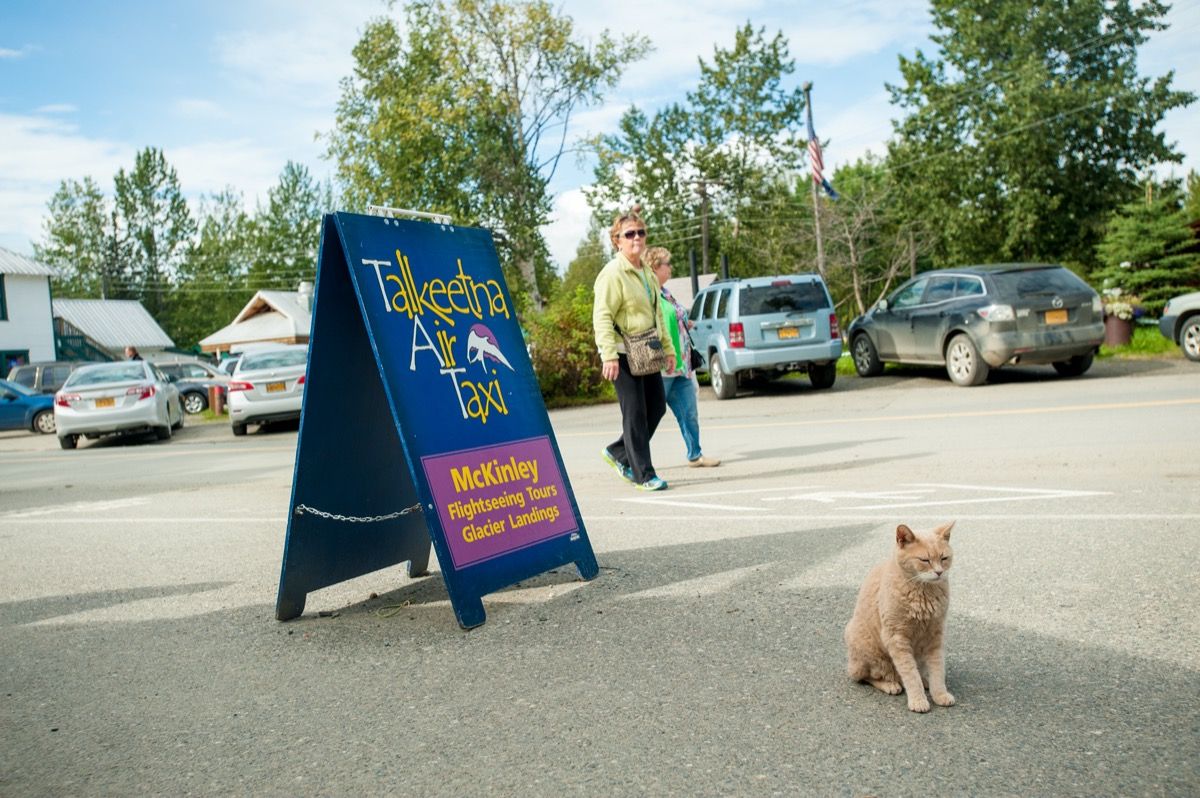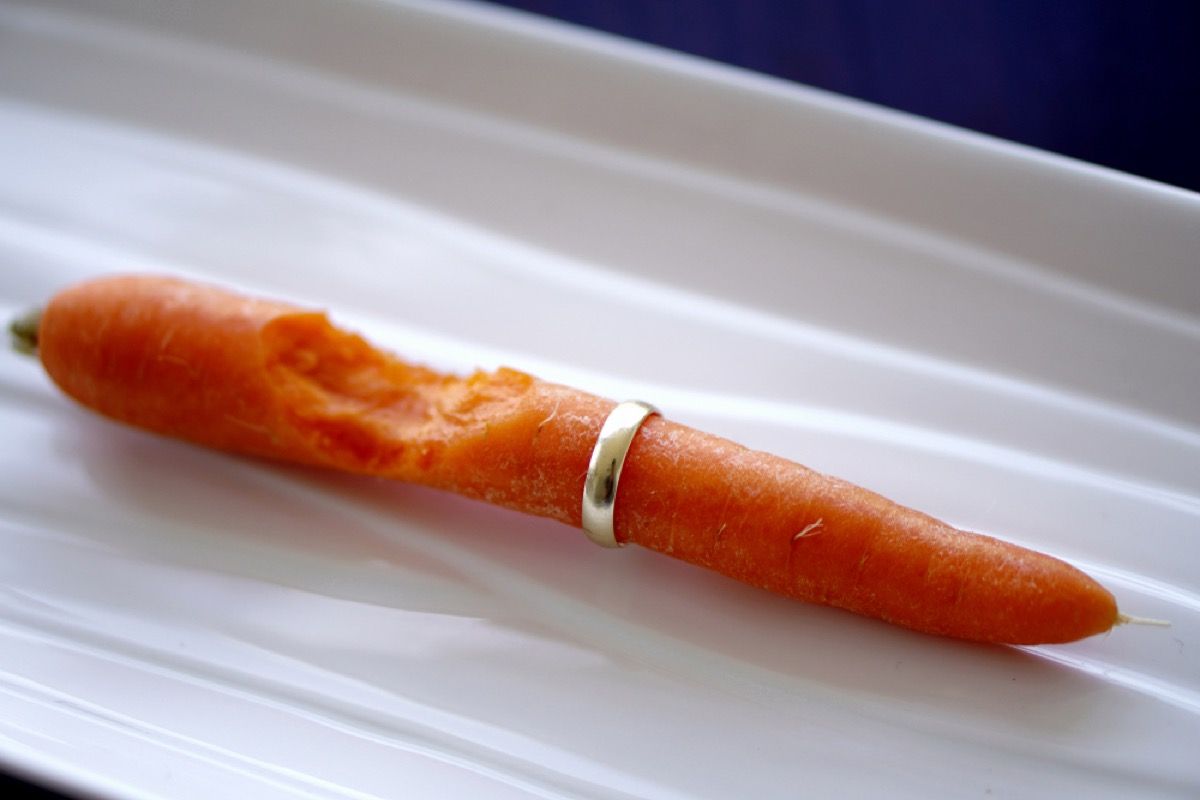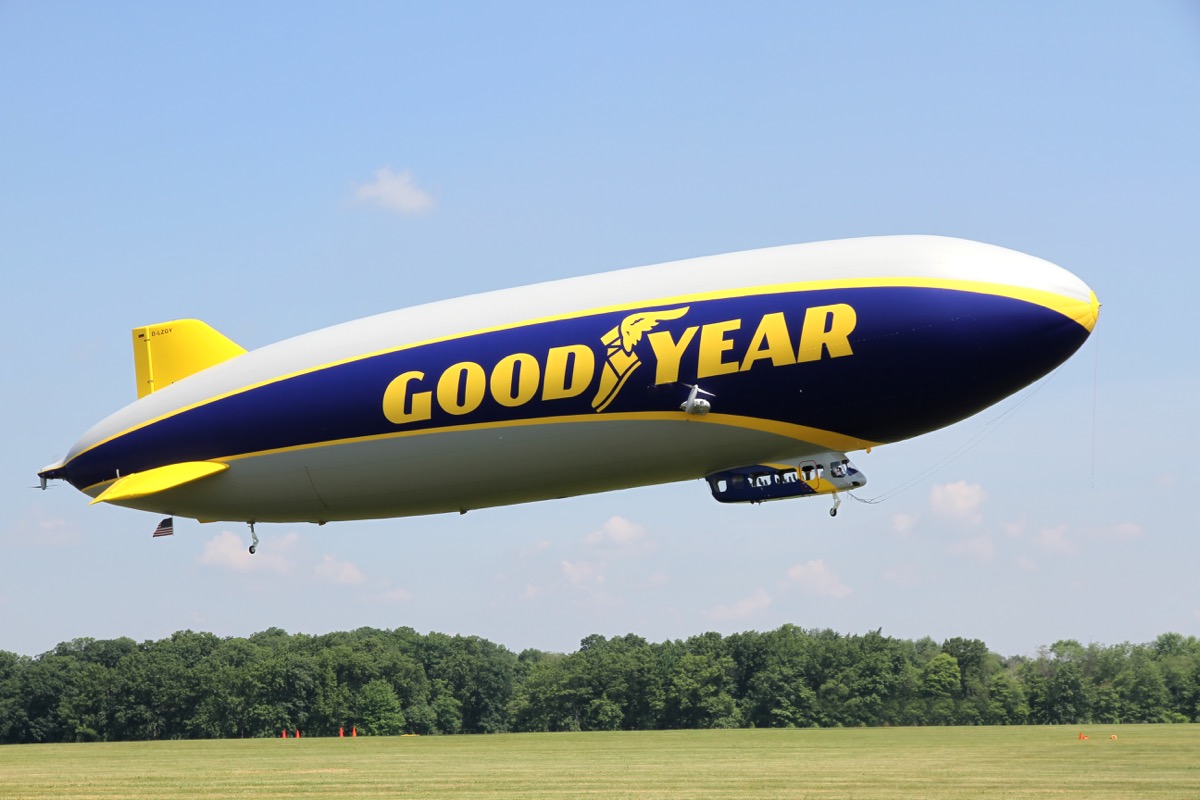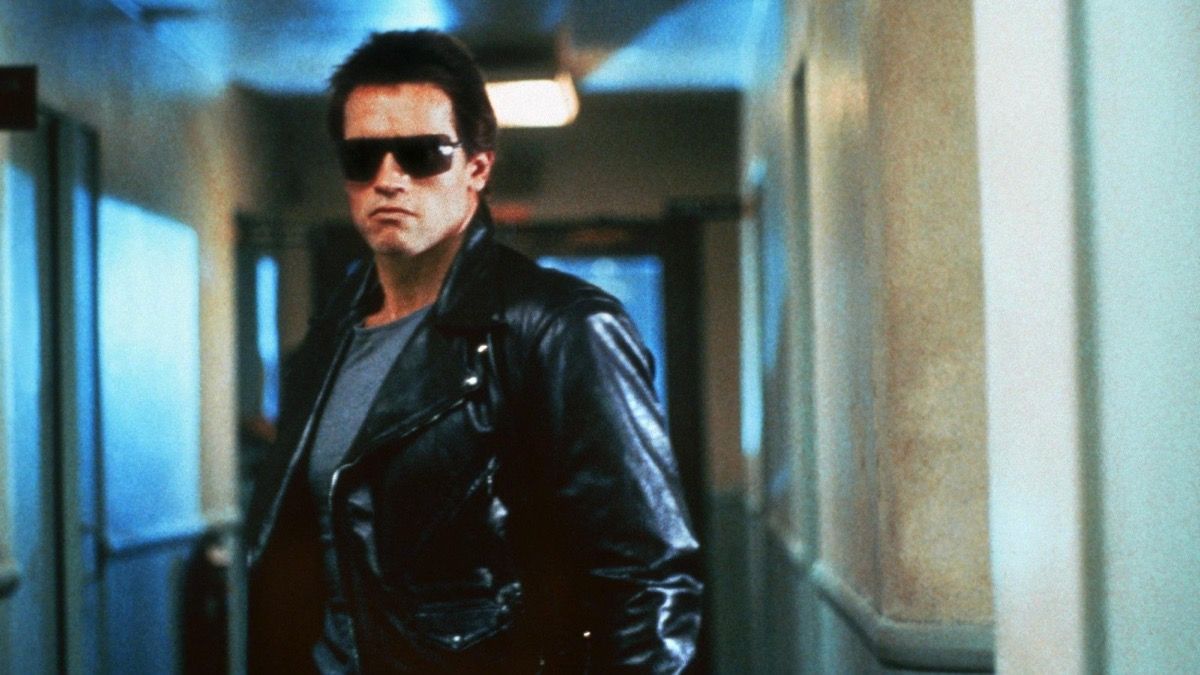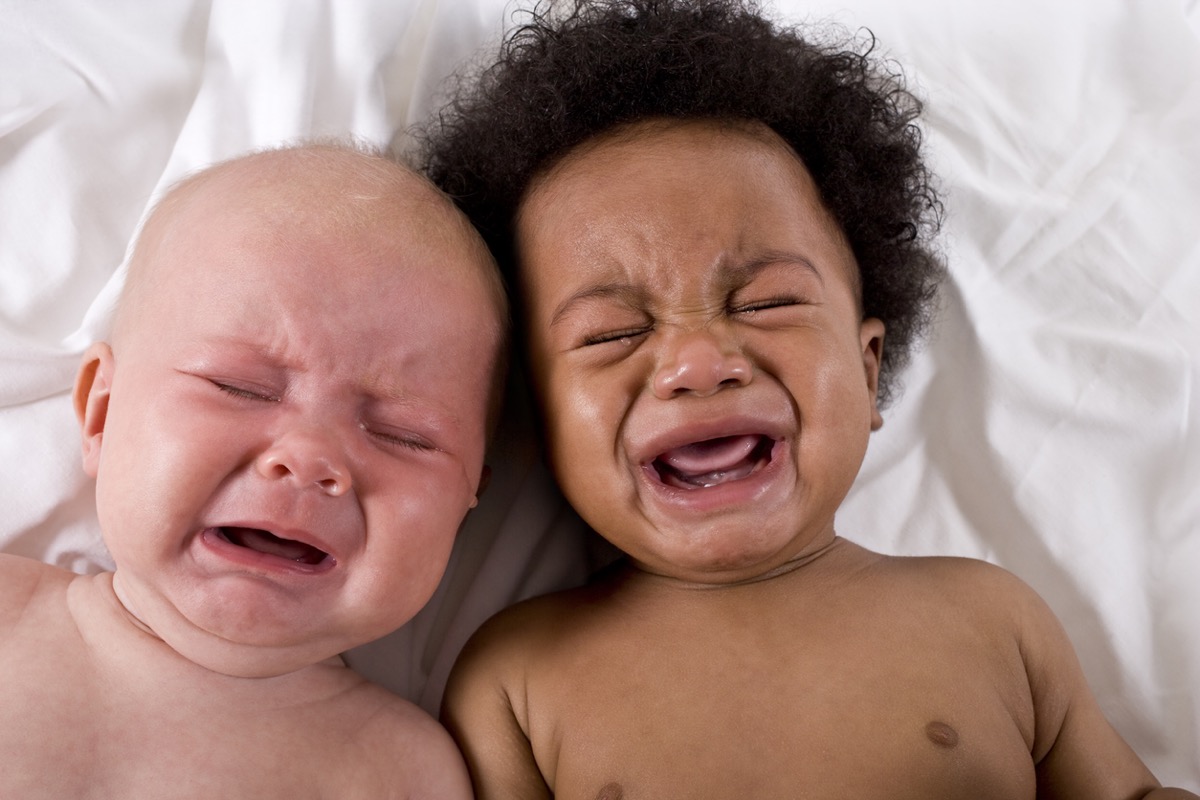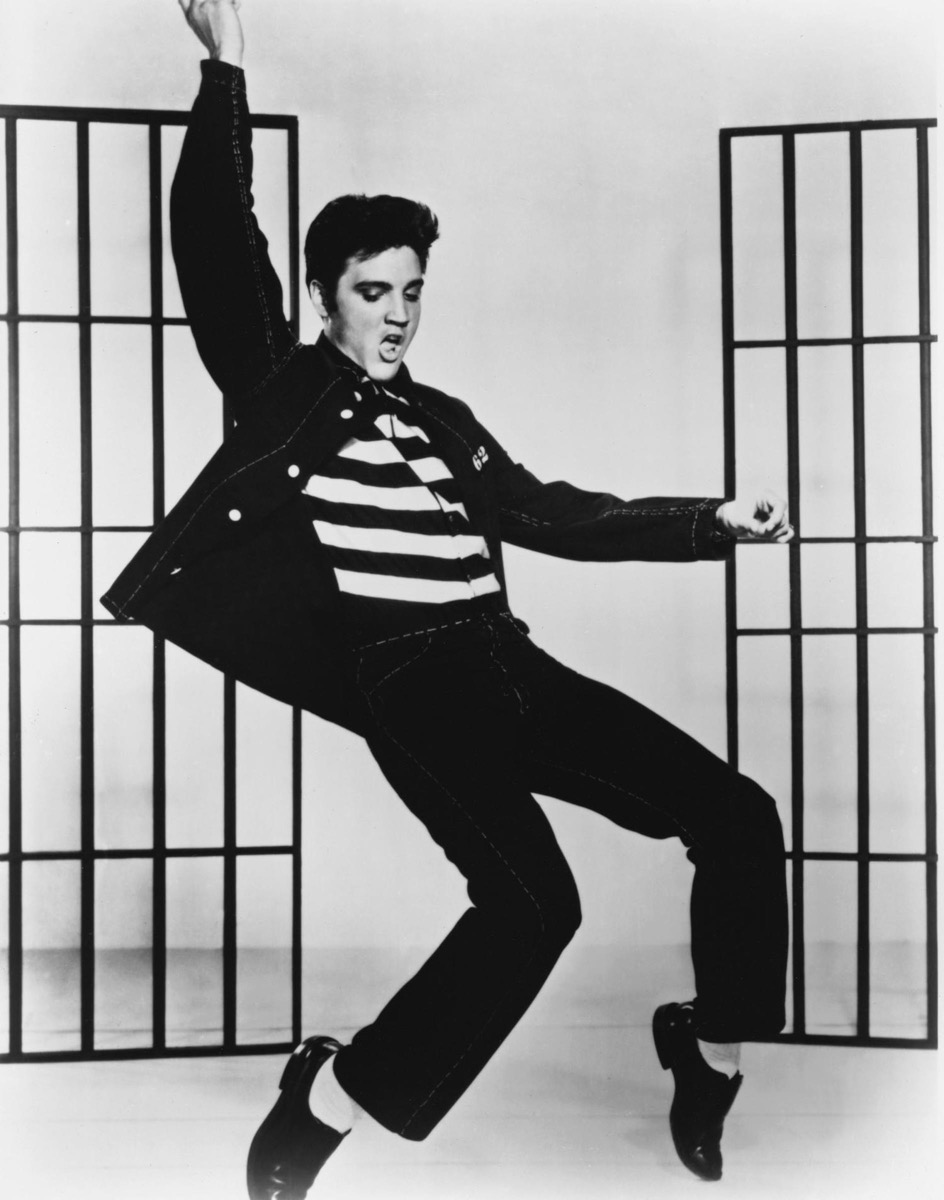For those who romanticize a burial at sea, the company Eternal Reefs offers an innovative solution. It mixes the cremated remains of a person with concrete to create a “pearl” onto which loved ones can etch personal messages, handprints or (environmentally friendly) mementos. The pearl is then encased in a “reef ball” that is dropped into the sea, where it provides a new habitat for fish and other sea life, helping encourage a vibrant ecosystem. The circle of life at work! For more trivia sent right to your inbox, sign up for our daily newsletter. “Bonobo,” the common name for apes, may sound like some sort of translation of a meaningful term, but in fact, it was the result of a typo. Researchers reputedly first found the animals in the town of Bolobo, Zaire, in the ’20s, but the name of the place was misspelled “Bonobo” on the shipping crate in which the animal was placed, leading others to refer to the animal by the name, which stuck. For millions of people, the coffee break is a key but often under-appreciated part of each day. To stop and give the break its proper due, the town of Stoughton, Wisconsin, hosts an annual Coffee Break Festival. The gathering includes coffee tastings, “brew-offs,” and bean-spitting contests. Why Stoughton? According to city officials, the coffee break was “born” in the city in the late 1800s, as women working at the local Gunderson Tobacco Warehouse began the ritual of pausing during the workday to brew up some coffee and have a chat. It sounds like something out of a sci-fi novel, but British inventors John Foden and Yannick Read have come up with a bicycle that actually flies. The XploreAir Paravelo is composed of a folding bicycle and a lightweight trailer that contains a biofuel-powered fan motor. The motor turns the fan, and with enough of a runway, it can reach up to 25 mph in the air and 4,000 feet in altitude. While the inventors were unable to reach their funding goal to produce enough XploreAirs for wide availability, they are offering their inventive services through “bespoke production.” Dolphins are known to be one of the smartest animals on the planet—possibly because they can conserve their brain power. Because they must be constantly on the lookout for predators, the marine mammals have developed a neat trick of maintaining partial consciousness even as part of their brain sleeps. Researchers have tested whether this “half sleep” negatively impacts the animals’ alertness during the day, but have found that even after five days of having their nocturnal alertness constantly tested, they’ve remained as alert and perceptive as ever. One of the earliest known vacuum cleaners was so large that it had to be hauled from house to house via a horse-drawn carriage. Its giant hoses were popped through the windows of customers, and a gas-powered motor generated the suction that pulled the dirt and debris into a glass container where onlookers could gawk at the volume of filth coming from their neighbors’ homes. Created by a team of students and teachers at the Pavlovo Arts College in Russia, the largest padlock in the world (according to Guinness World Records) measures 56.8 inches tall, 41.3 inches wide, and 10.2 inches deep. Altogether this hefty lock, including key, weighs 916 pounds. Whatever it’s protecting presumably weighs a whole lot more! Pandas basically only eat bamboo, which also happens to be incredibly hard to digest. That means that these adorable animals must eat about 30 pounds of the stuff each day to get enough nutrients—defecating about four-fifths of what they eat (and even what they do digest is not especially easy on their gastrointestinal system). These guys should really consider a change in diet. The first McDonald’s Drive Thru was installed in a restaurant based in Sierra Vista, Arizona, located near the Fort Huachuca military installation. Military rules forbade the soldiers from wearing their military uniforms in public, and they weren’t about to change into civilian clothes just to grab a burger and run back to base, so restaurant manager David Rich came up with a solution: cut a hole into the wall and allow members of the military to pick up their orders without stepping out of their car. The convenience and simplicity of the idea quickly caught on. The master of suspense, who terrified audiences with movies like Psycho and The Birds, considered himself an ovophobe—someone frightened of eggs. Alfred Hitchcock explained to an interviewer in 1963: “I’m frightened of eggs, worse than frightened; they revolt me. That white round thing without any holes, and when you break it, inside there’s that yellow thing, round, without any holes…Blood is jolly, red. But egg yolk is yellow, revolting. I’ve never tasted it.“ae0fcc31ae342fd3a1346ebb1f342fcb If someone tells you they’re “sweating like a pig” you might want to point out to them (if you’re that sort of person) that if they were being biologically accurate, that would mean they were not sweating at all. Swine are born without sweat glands, so when they need to cool off, their only option tends to be to find a cool puddle of mud in which they can roll around. An empty fridge not only makes it more difficult to decide what to snack on, it also wastes valuable energy. It works like this: the more empty space in the fridge, the more cold air is displaced by warm when you open the door, requiring the appliance to generate cool air to replace it. If the fridge is packed, less cool air escapes and less energy is required to replenish it. The writers at The Kitchn go so far as to advise fridge owners to fill empty bottles with water in order to displace the empty air. The German town of Wupperttal is home to Lego-Brücke, also known as LEGO Bridge—a bridge that looks like it’s made of candy-colored LEGO bricks, providing a foot- and bikeway for those looking to cross over the street below. Despite appearances, the bridge is not made of giant plastic bricks however, but concrete, and it was painted to look like the popular building toys by street artist Martin Heuwold. While umbrellas are used and appreciated by pretty much everyone living in rainy places, for centuries they were seen as something only to be used by women—associated with the fashionable parasols women would carry during nicer days to keep the sun from their skin. But in the mid-18th century, the barriers started to fall, with public figures like philanthropist Jonas Hanway carrying umbrellas during public events. Soon others took notice of the accessory’s practicality and it wasn’t long before men were using them as often as women. In 1997, an orange cat names Stubbs became honorary mayor of the Alaskan town of Talkeetna. With a population of 772 in 2000, it would not have taken too many votes to earn the position (and the small town did not actually have a real, human mayor. anyway), but Stubbs proved adept at the role, gaining fans from around the world and “serving” in the position for years, greeting tourists and becoming a beloved symbol of the town until his death in 2017. The American Public Power Association (APPA) says that squirrels are the most frequent cause of power outages in the U.S. The APPA even developed a data tracker called “The Squirrel Index” that analyzes the patterns and timing of squirrels’ impact on electrical power systems. Turns out, the peak times of the year for squirrel attacks are from May to June and October to November. Typically, the squirrels cause problems by tunneling, chewing through electrical insulation, or becoming a current path between electrical conductors. “Frankly, the number one threat experienced to date by the U.S. electrical grid is squirrels,” said John C. Inglis, the former deputy director of the National Security Agency, in 2015. In ancient Greece and Rome, doctors used spider webs to make bandages for their patients. Spider webs supposedly have natural antiseptic and anti-fungal properties, which can help keep wounds clean and prevent infection. It’s also said that spider webs are rich in vitamin K, which helps promote clotting. So, next time you’re out of Band-Aids, just head to your attic and grab some “webicillin.” A woman in Sweden lost her wedding ring while cooking for Christmas in 1995. She looked everywhere for it, and even had her kitchen floor pulled up hoping she could find it. But she wouldn’t see it again until 2012. While gardening 16 years later, the woman found the ring around a carrot that was sprouting in the middle of it. The only explanation was that the ring must have been lost in vegetable peelings that were turned into compost. Clearly, composting isn’t just good for the environment. There are 26 bones in each foot. That’s 52 bones in both feet, out of 206 total bones in your whole body, which is more than 25 percent. It may sound crazy at first, but think about it: Your feet support your weight and allow you to jump, run, and climb. Those bones and joints also allow your feet to absorb and release energy efficiently. It’s one of the reasons humans can outrun any other animal in an endurance race. To encourage more young people to donate blood, Sahlgrenska University Hospital in Gothenburg, Sweden, sends a text to donors when their blood has been dispensed to someone in need. A common issue with blood donation—along with other types of charitable donations—is that if a donor doesn’t know the recipient, it’s harder to convince them that donating is worth it. But with this system, which started in 2012, potential donors in Sweden have proof that their contribution is going to good use. According to research from security firm Symantec, religious websites carry three times more malware threats than pornography sites. Symantec found that the average number of security threats on religious sites was around 115, compared to adult content sites which carried around 25. In fact, only 2.4 percent of adult sites were infected with malware. The researchers hypothesized that’s because porn sites need to generate a profit, so there’s a financial incentive to keeping them virus-free to encourage repeat business. In 1966, Fredric Baur developed the ingenious idea for Procter & Gamble to uniformly stack chips inside a can instead of tossing them in a bag. Baur was so proud of his invention that he wanted to take it to the grave—literally. He communicated his burial wishes to his family, and when he died at age 89, his children stopped at Walgreens on the way to the funeral home to buy his burial Pringles can. They did have one decision to make, though. “My siblings and I briefly debated what flavor to use,” Baur’s eldest son, Larry, told Time. “But I said, ‘Look, we need to use the original.’” Fredric Baur, an American classic. Today, sunglasses serve as protective eyewear, effectively preventing bright sunlight from causing discomfort or damage to our eyes. Of course, they’re also a fashion accessory. But sunglasses were originally made out of smoky quartz in 12th century China, where they were used by judges to mask their emotions when they were questioning witnesses. Dentist William Morrison and confectioner John C. Wharton invented machine-spun cotton candy in 1897. It was first introduced at the 1904 World’s Fair as “Fairy Floss.” Then, another dentist, Josef Lascaux, reinvented the machine in 1921. He came up with the name “cotton candy,” which replaced “fairy floss.” When William Shakespeare died at 52 years old on Apr. 23, 1616, he was buried in a tomb that featured an epitaph meant to ward off grave robbers: “GOOD FREND FOR IESVS SAKE FORBEARE / TO DIGG THE DVST ENCLOASED HEARE / BLESTe BE Ye MAN Yt SPARES THES STONES / AND CVRST BE HE Yt MOVES MY BONES.” Or more clearly: “Good friend, for Jesus’ sake forbear / To dig the dust enclosed here / Blessed be the man that spares these stones / And cursed be he that moves my bones.”
In March 2019, the Roosevelt Hotel in New Orleans decided to celebrate its 125th anniversary by offering a free seven-night stay in its presidential suite, along with complimentary private dinners and spa treatments worth a whopping $15,000. But this wasn’t a standard giveaway: The prize was only available to the person who returned the “most outrageous” item ever stolen from the hotel. Cousins whose parents are identical twins share 25 percent of their DNA, instead of the usual 12.5 percent. While full-siblings share 50 percent of their DNA, half-siblings share 25 percent. That’s why, though children of identical twins are legally cousins, they are genetically the equivalent of half-siblings. Because there hadn’t been a sighting of a Fernandina giant tortoise in more than 100 years, scientists believed that we had lost the last of the creatures ages ago. However, in Feb. 2019, an adult female was spotted around Fernandina Island in the Galápagos. Scientists also found bite marks on nearby cacti that led them to suspect there may be other tortoises in the area, too. Wacho Tapia, director of the Giant Tortoise Restoration Initiative at the Galápagos Conservancy, released a statement saying, “To find a living tortoise on Fernandina Island is perhaps the most important find of the century … Now we just need to confirm the genetic origin of this female. She is old but she is alive!”
The Goodyear Blimp is nothing short of iconic, but we wouldn’t classify it as a bird. Still, that didn’t stop Redondo Beach—a coastal city situated near the Goodyear Blimp’s home airport in Carson, California—from passing a resolution in 1983 to make the blimp its official bird. If you got into your car, turned on the ignition and drove up to the sky at 60 mph, it would take just one hour to get to outer space, according to astronomer Fred Hoyle. Of course, this is purely a theoretical, but it sure is fun to think about! In 2008, two Virginia sisters found a cornflake that was shaped like the state of Illinois, and sold it on eBay for $1,350. Monty Kerr, the owner of a trivia website from Austin, Texas, was the buyer; he explained that he wanted the special piece of cereal for his traveling museum. “We’re starting a collection of pop culture and Americana items,” he told the Associated Press. “We thought this was a fantastic one.” The copper roof of Arizona’s capitol building in Phoenix is undeniably impressive, especially once you learn that it’s the equivalent to 4,800,000 pennies. That’s a heck of a lot of pocket change! Clouds are not as light and fluffy as they appear. In fact, researchers have found that a single cloud weighs about 1.1 million pounds. How do they know? Well, that number is calculated by taking the water density of a cloud and multiplying it by its volume. Fortunately, the cloud can still “float” at that weight because the air below it is even heavier. Neil Armstrong and the Apollo 11 crew faced the real chance that they wouldn’t return from the moon safely, leaving their families without financial support. Due to the extreme danger that they were about to face, they couldn’t take out life insurance policies. So instead, they signed hundreds of autographs, which their families would have been able to sell if they didn’t make it home. Luckily, those life insurance autographs weren’t needed. They do, however, show up in space memorabilia auctions today, selling for as much as $30,000. According to British law, any unclaimed swan swimming in the open waters of England and Wales belongs to the Queen. The law originated in medieval times when swans were a delicacy for the wealthy, but it still stands today. Queen Elizabeth II also upholds a centuries-old tradition with the swans: Every year during the third week of July, all the swans in the River Thames are counted for the Queen in a practice called “Swan Upping.” In 2005, one Powerball drawing had a shocking 110 second-place winners who all attributed their luck to a fortune cookie. The folks at Powerball were suspicious (typically, there are just four or five second-place winners); however, no foul play was involved. Wonton Food, a Chinese fortune cookie distribution factory in Long Island City, just so happened to correctly foretell five of the six winning numbers. “We are so excited,” Ho Sing Lee, president of the cookie manufacturer, said at the time. “I knew people took our lucky numbers seriously. It shows that they really do tell fortunes, and we are happy so many people have benefited.” Each winner took home between $100,000 and $500,000, depending on how much they bet. When most people have a baby, they typically wait a little while before even thinking about having another child. But that wasn’t an option for one woman in Bangladesh, who unexpectedly gave birth to twins in March 2019, less than a month after having another newborn. The highly unusual circumstance came about because the woman has two uteruses and both were able to successfully carry the three healthy children to term. However, the mother’s doctor did admit, “We were very shocked and surprised. I have never observed something like this before.” You’d think if a spacial body met a phenomenally fiery fate right above our heads, we’d notice. But when a meteor hit our atmosphere on Dec. 18, 2018, and exploded with a force that was 10 times the energy of the Hiroshima atomic bomb, it wasn’t discovered by NASA scientists until after the fact. Turns out, it went largely undetected because it took place over the Bering Sea in an area that was close, but not directly on, the path of commercial planes flying between North America and Asia.
It’s hard to imagine dolphins being any more wonderful than they already are, but a Louisiana bottlenose dolphin named “Pinky” is almost too adorable to believe. First spotted in 2007, the unusual creature got its name from its surprising pink color, which is likely the result of a rare genetic condition. Pinky was seen again in 2015 and in 2018 while mating. Despite the fact that fishermen have apparently seen her swimming with baby dolphins, they’re not sure if she’s their mother—especially since no news of any pink baby dolphins has surfaced.
If a storm is passing and the sun starts shining, you might be lucky enough to spot a rainbow. But did you know that you can see something just as amazing at night? While they’re incredibly unusual, moonbows (or lunar rainbows) are caused by the reflection, refraction, and dispersion of light, and tend to happen most often in places with waterfalls and mist. There also needs to be a near full moon for there to be enough light for you to see it.
If you thought it was impressive that humans can make it to the top of Mount Everest, you’ll be stunned to find out that bumblebees can make it to the summit, too. Researchers who tracked two bees that were able to fly at more than 29,525 feet (or 9,000 meters, which is higher than Everest) admitted that they were “shocked at how high they could fly.” The Terminator, starring Arnold Schwarzenegger and Linda Hamilton, earned a worldwide total of $78.3 million at the box office in 1984. As it went on, the franchise took in over $1.4 billion—not bad for a movie whose rights sold for a dollar. Before James Cameron became famous for directing blockbusters like Titanic and Avatar, he was just an unknown filmmaker with an ambitious idea. In order to get his movie made, he handed over the rights to the script for a token amount on the terms that he would be allowed to direct the movie. Despite the eventual success of the project, Cameron later admitted that he regrets the decision to sell such a valuable story for such a low amount, saying, “I wish I hadn’t sold the rights for one dollar. If I had a little time machine and I could only send back something the length of a tweet, it’d be—‘Don’t sell.’” The comb jelly—also known as the warty comb jelly, sea walnut, or Mnemiopsis leidyi—has a disappearing butt. Sidney Tamm of the Marine Biological Laboratory in Woods Hole, Massachusetts, told New Scientist that “there is no documentation of a transient anus in any other animals that I know of. It is not visible when the animal is not pooping. There’s no trace under the microscope. It’s invisible to me.” Some odd things have been sold on eBay, from a grilled cheese sandwich with the face of the Virgin Mary to Justin Timberlake’s half-eaten French toast. But one of the strangest listings ever had to be for the country of New Zealand. That’s right: A man from Brisbane, Australia tried to sell New Zealand on eBay in 2006. The listing described the country as “the dodgiest American Cup win ever” and said it has “very ordinary weather.” Despite those selling points, the ridiculous auction gained a ton of interest. The starting bid was 1 cent and after 6,000 hits and 22 bids, the selling price for New Zealand climbed all the way to $3,000. Eventually, eBay caught wind of the auction and pulled it from its site. “Clearly New Zealand is not for sale,” a spokesperson for eBay Australia said at the time. London’s Brompton Cemetery inspires some strange beliefs. It’s the final resting place of Hannah Courtoy, who had a well-known respect for ancient Egyptians’ astrological (and perhaps mystical) knowledge. She’s buried there, along with two of her daughters, in a massive 20-foot granite mausoleum that includes a pyramid peak and a bronze door decorated with Egyptian hieroglyphs. The entryway also features a keyhole, but the key that unlocks it was lost, which—along with Courtoy’s history—sparked the tomb’s peculiar reputation. Because no one can get inside to confirm or deny superstitious suspicion, there’s a local legend that says it isn’t a tomb at all, but a time machine. However, historian Stephen Coates told Mental Floss, “It’s not a time machine. It’s a teleportation chamber.” While most parents do what they can to prevent or stop their babies from crying, that’s not always the case in Japan. That’s because it’s a 400-year-old Japanese tradition that if a sumo wrestler can make your baby cry, it means he or she will live a healthy life. During a special ceremony, parents hand over their infants to sumo wrestlers who bounce their precious tots up and down and sometimes even roar in their little faces to get the tears flowing. “He’s not a baby that cries much, but today he cried a lot for us and we are very happy about it,” mother Mae Shige said at a 2014 event. They say if it ain’t broke, don’t fix it—and that turned out to be the case for a very early design of the mousetrap. In the mid-1800s, inventor Colin Pullinger unveiled his Perpetual Mousetrap and claimed that it would last a lifetime. More than a century later, Pullinger could still make that claim. The 155-year-old device, on display at England’s Museum of English Rural Life, managed to catch a mouse that snuck into it in 2016—even without bait! The mouse entered the trap attempting to build a nest and ended up activating its see-saw mechanism. Sadly, the rodent didn’t survive. But clearly, the perpetual mousetrap does! The blue whale is the largest living creature—it’s even larger than most dinosaurs. The biggest blue whales can be over 100 feet in length and weigh more than 100 tons. Their hearts alone can weigh 1,300 pounds, and are the size of a small car. Unsurprisingly, blue whales have enormous arteries, which pump blood through their massive hearts and into their vital organs. These arteries are so big that a fully grown human could swim through them, not that you should try it. They don’t call it a “good cry” for nothing. Studies suggest that crying stimulates the production of endorphins, our body’s natural painkiller, and feel-good hormones, like oxytocin. In short, crying more will ultimately lead to smiling more. As the International Space Station (ISS) has modules and operations in Russian, all astronauts going to the ISS must know how to speak Russian. Some astronauts have claimed that learning this new language was the biggest challenge of their training. According to the U.S. State Department Foreign Service Institute, English-speaking astronauts can expect to spend 1,100 class hours to reach a reasonable level of fluency in Russian. That’s twice as many hours as it typically takes to learn other languages like French, Spanish, and Dutch. In 1881, dentist Alfred P. Southwick witnessed a drunk man die quickly after touching a live electric generator. Southwick soon realized that electricity could be a quick and more humane alternative to hanging for executions. And thusly, the electric chair was born, and was first used in 1890. Though it wasn’t an initial success—a second jolt needed to be used—Southwick eventually worked out the kinks. Cotton candy and electric chairs: What will dentists think of next? Comic Sans is the classic cute, lighthearted, informal, good-for-a-child’s-birthday-party-invitation font. But it also comes across as immature and unprofessional, and has been called the world’s most hated font. Comic Sans was designed by Vincent Connare in 1995, and even he isn’t a fan. “I’ve only ever used Comic Sans once. I was having trouble changing my broadband to Sky so wrote them a letter in Comic Sans, saying how disappointed I was,” he told The Guardian. “I got a £10 refund.” Worth it, we guess. Fresh aristocrat Baron de Coubertin designed the Olympic flag in the early 1900s, and he was very intentional with his creation. At least one of the colors on the Olympic flag appears on the flags of every nation that competed in the games at the time (but only if you count the white background of the flag itself). “A white background, with five interlaced rings in the center: blue, yellow, black, green, and red … is symbolic,” Coubertin said in 1931. “It represents the five inhabited continents of the world, united by Olympism, while the six colors are those that appear on all the national flags of the world at the present time.” Lake Hillier sits on the edge of Middle Island, which is off the coast of Western Australia. It’s known for its vibrant pink color, which is due to the presence of the algae Dunaliella salina. It causes the lake’s salt content to create a red dye, which helps produce its bubble gum color. And despite the high salt levels, Lake Hillier is safe to swim in. Hillier also has a purple-ish lake sibling. Hutt Lagoon, in Port Gregory on Western Australia’s Coral Coast, has a large amount of Dunaliella salina, too. Depending on the season and the amount of cloud coverage, Hutt Lagoon can be different colors, ranging from red to pink to lilac. In 1908, New York tea merchant Thomas Sullivan sent samples of tea leaves to some of his customers in small silken bags. Many of the recipients assumed that the bags were supposed to be used in the same way as the metal infusers. So, they put the entire bag into the teapot, rather than emptying out its contents. After such positive feedback from the happy accident, Sullivan designed intentional teabags for commercial production. In the 1920s, his sachets made of gauze—and later, paper—included the string with the tag hanging over the side so the bag could be easily removed. Some things really do stay the same. An actual research study commissioned by Guinness found that an estimated 162,719 pints of Irish stout go to waste every year… via mustaches. The study found that 0.56 milliliters of Guinness get trapped in the average beard or mustache with each sip. And it takes about 10 sips to finish a pint. An estimated 92,370 Guinness consumers every year in the UK have facial hair. Assuming they consume on average 180 pints each a year, the total cost of wasted Guinness annually is about $536,000. The moral of this story? Shave and save! Over 2,000 years ago, Julius Caesar promoted the use of the Julian calendar, a 365-day calendar that didn’t account for leap years. Eventually, the calendar fell out of sync with the seasonal equinoxes, and holidays—like Easter—didn’t land where they should. Finally, in 1582, Pope Gregory XIII mandated that Catholic nations switch to a new Gregorian calendar that solved the problem. But for many countries, including Russia, the switch from the Julian calendar to the Gregorian took centuries. As a result, in 1908, the Russians missed the first 12 days of the Olympics, which was hosted in London, because they were still using the Julian calendar. The country finally changed over in 1918 after the Bolsheviks took control. Fun bonus fact: Greece, the country where the Olympics were born, was the last nation to make the switch in 1923. New Mexico’s Department of Transportation decided to spice up a desolate quarter-mile stretch of Route 66 between Albuquerque and Tijeras. Grooves were added in the road that play music when you drive over them going the speed limit of 45 mph. The grooves work just like the rumble strips, which vibrate your car if you drift out of your lane. These particular strips are positioned to create different pitches when you drive over them, and if you do, you can clearly hear “America the Beautiful” play through the vibrations in your car’s wheels. Colonel Tom Parker was Elvis Presley’s manager for nearly two decades. Many credit him as the mastermind behind Presley’s massive commercial success. In 1956, Parker signed a merchandising deal to turn Elvis into a brand name, and by the end of the year, merchandise sales had brought in $22 million. Because he got a 25 percent profit share, Parker was always finding new ways to get fans to spend. He even decided to market to Presley’s haters. He came up with the idea to sell badges that read “I Hate Elvis,” “Elvis is a Jerk,” and “Elvis the Joik” (“jerk” in a New York accent). It’s become a common notion that paper is always a better choice than plastic. In fact, bans on plastic bags are regularly being enacted. However, both paper and plastic have their drawbacks. According to research, paper bag production emits 70 percent more pollution, uses four times as much energy, and takes more time to break down, when compared to plastic bags. Guess the best option is to carry reusable bags with you. You might assume that a man who can run as fast as Usain Bolt would be the embodiment of physical perfection. But it turns out, Bolt has had his share of physical difficulties to overcome, including scoliosis. “My spine’s really curved bad,” Bolt told ESPN Magazine in 2011. “But if I keep my core and back strong, the scoliosis doesn’t really bother me. So I don’t have to worry about it as long as I work hard.” A 2007 University of Iceland survey found that 62 percent of Icelanders believe in real-life elves. In fact, in 2014, protesters claimed a proposed highway would destroy an “elf church,” which to many was just a gigantic rock. Eventually, the “church” was moved to a safe place so that it would not be harmed and the construction continued. Though the rock weighed 70 tons and required a crane to move it, the preservation of places important to elves is significant to Icelanders. The country’s elf history dates back to Viking-era poems from around the year 1000. To Icelanders, these elves are not tiny figures who build toys for Santa; they actually look very much like humans and can range in size. Many believe that grave misfortune will befall those who dare to build in elf territory, even though it cannot be seen—hence the “church” preservation. Article 11 of Janis Joplin’s will included the stipulation that she wanted $2,500 of her estate set aside for a post-funeral party “at a suitable location as a final gesture of appreciation and farewell.” About 200 special guests were invited to the party with invitations that read, “Drinks are on Pearl,” which was a reference to Joplin’s nickname and her final album title. The party took place at a suitable location for Joplin: the Lion’s Share in San Anselmo, California. “I think it was fitting to send her off that way,” Joplin’s former lover James Gurley wrote in Pearl: The Obsessions and Passions of Janis Joplin. Bubble wrap was invented in 1957 by engineers Alfred W. Fielding and Marc Chavannes, who sealed two shower curtains together, creating a smattering of air bubbles, which they initially tried to sell as wallpaper. Then, in 1960, they realized their product could be used for protection in packaging, and they founded Sealed Air Corporation. When the inventors showed the product to IBM, which had just launched its first mass-produced computers, the tech company became the first big bubble wrap client. Sealed Air still exists today, creating both Cryovac food packaging and yes, bubble wrap. The standard Ohio license plate is white with navy blue letters and numbers, and a red border at the top. That is, of course, if you don’t have multiple DUIs. Since 1967, Ohio has issued special yellow license plates with red characters to DUI offenders. As of 2004, these “scarlet letter plates”—or “party plates”—are mandatory for repeat DUI offenders, and whenever a driver’s blood-alcohol level is twice the legal limit. While there is public shame that comes along with these license plates, it also helps the police spot these vehicles when patrolling highways.
